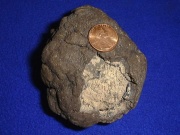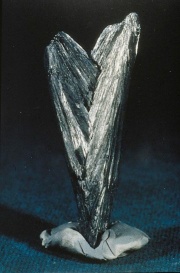Manganese
Description
A silvery-white, brittle metallic element. Manganese is an abundant, widely distributed element that is present in about 0.1% of the earth's crust. It occurs naturally in the minerals braunite, Rhodochrosite, Pyrolusite, hausmannite, manganite, manganosite, and in nodules on the ocean floor. Manganese metal was isolated in 1774 by Johann Gahn of Sweden. Pure manganese powder is used as a deoxidizing agent (see Ageless®). Metallic manganese cannot be fabricated, but rather it is used in the form of ferromanganese Alloy. Manganese is added to steel and other metals to increase strength, hardness, and wear resistance. Manganese salts are used in Glass and Ceramic glazes to produce pink tones.
Synonyms and Related Terms
Mn; Mangaan (Ned.); manganèse (Fr.); Mangan (Deut.); manganês (Port.); manganeso (Esp.); Mangan (Sven.); braunite; rhodochrosite; pyrolusite; hausmannite; manganite; manganosite
Risks
- Inhalation or ingestion of manganese can cause a nervous system disorder.
- Dust and powder are flammable
- ThermoFisher SDS
Physical and Chemical Properties
Decomposes slowly in water. Reacts with mineral acids.
| Composition | Mn (atomic no. 25) |
|---|---|
| CAS | 7439-96-5 |
| Mohs Hardness | 5.0 |
| Melting Point | 1244 C |
| Density | 7.47 g/ml |
| Molecular Weight | atomic wt = 54.9380 |
| Boiling Point | 2095 C |
Resources and Citations
- Web Elements: Website
- Richard S. Lewis, Hawley's Condensed Chemical Dictionary, Van Nostrand Reinhold, New York, 10th ed., 1993
- Michael McCann, Artist Beware, Watson-Guptill Publications, New York City, 1979
- Van Nostrand's Scientific Encyclopedia, Douglas M. Considine (ed.), Van Nostrand Reinhold, New York, 1976
- Random House, Webster's Encyclopedic Unabridged Dictionary of the English Language, Grammercy Book, New York, 1997
- The Merck Index, Martha Windholz (ed.), Merck Research Labs, Rahway NJ, 10th edition, 1983 Comment: entry 5762
- The American Heritage Dictionary or Encarta, via Microsoft Bookshelf 98, Microsoft Corp., 1998

